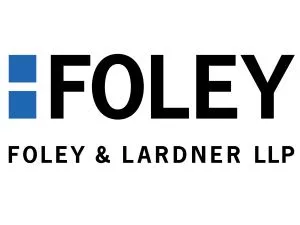- with readers working within the Aerospace & Defence and Metals & Mining industries
- within Coronavirus (COVID-19), Government, Public Sector and Strategy topic(s)
This year, U.S. trade policy has undergone a dramatic shift, driven by a series of presidential proclamations that have raised tariff rates sharply. Some tariffs (such as the global and reciprocal tariffs, and the special tariffs relating to fentanyl and unauthorized immigration) have been issued under the International Emergency Economic Powers Act (IEEPA), and others have been issued using Section 232 (the sectoral tariffs on steel, aluminum, and passenger vehicles and light-duty trucks). Recently, the validity of the entire tariff structure has been thrown into doubt, when first the Court of International Trade and then a D.C. district court issued determinations finding that IEEPA could not be a basis either for longstanding broad-based tariffs or the imposition of tariffs as a means of creating negotiating leverage.
In light of this decision, we have received numerous requests for further information regarding the impact of these decisions. As an aid to the importing community, this article provides an overview of: (1) the current status of existing and proposed tariffs, in light of these two decisions; (2) the impact of these two determinations; and (3) coping mechanisms for importers to manage and mitigate exposure in the current environment.
The Current Tariff Landscape
To appreciate the impact of the recent court decisions, it is helpful to provide some context regarding the current structure of U.S. tariffs. The table below outlines the six main "buckets" of tariffs currently shaping the trade environment:
| Bucket | Description | Current Status |
| 1 | Normal (Chapters 1–97): Standard duties (generally 0%–7%) under the HTS. | Permanent (0%–7%). |
| 2 | Global 10% Tariffs: Broad, across-the-board duties on all non-exempt goods. Issued under IEEPA. | Still in place; likely permanent. |
| 3 | Reciprocal 50% Tariffs: Suspended pending negotiations; could ultimately decline, but terms uncertain. Issued under IEEPA. | Paused for country-by-country negotiations. |
| 4 | China (up to 170%): Includes 25% Section 301 duties (7 years in place) plus additional levies on critical sectors. All tariffs other than the original Section 301 duties under IEEPA. | Permanent for Section 301; IEEPA tariffs still in place; global and reciprocal tariffs suspended for 90 days. |
| 5 | Sectoral 232 Tariffs (25%): Steel & aluminum (permanent); autos (suspended for USMCA-origin goods); future sectors under review. None are issued under IEEPA. | Potential expansion of steel and aluminum derivates; ongoing investigations for copper, lumber, semiconductors, civilian aircraft, pharmaceutical, and certain minerals. |
| 6 | Canada & Mexico Goods: Subject to global and reciprocal tariffs of 10% and 25%, as well as 25% tariffs relating to fentanyl and unauthorized immigration (all issued under IEEPA). All tariffs suspended for goods meeting updated Rules of Origin (75% North American content, 40% labor rule). | Remains suspended; subject to USMCA review. |
Litigation Challenging the Use of IEEPA As Authority to Impose Tariffs
On May 28, 2025, the U.S. Court of International Trade (CIT) and the D.C. Circuit issued parallel rulings holding that IEEPA does not confer "unbounded" authority to impose tariffs; nor does it authorize the use of tariffs to create leverage in broader trade negotiations. As a result, several IEEPA-based measures were enjoined. A U.S. District Court judge issued a similar ruling the next day. The CIT directed that the tariffs be eliminated within ten days, prompting the Trump administration to file an immediate appeal and an emergency motion seeking a stay of the CIT directive, which the Court of Appeals for the Federal Circuit (CAFC) granted. The CAFC also established an aggressive briefing schedule, with the last brief due June 9, 2025. The Trump administration has indicated that it will take the issue to the Supreme Court if necessary (and we expect the same is true of the parties challenging the tariffs).
Tariffs Impacted by the CIT Decision
The CIT's decision invalidated key tariffs imposed under IEEPA. Specifically, the ruling struck down:
- The fentanyl-related tariffs targeting Canada and Mexico (25%) as well as China (20%).
- The 10% global tariffs applied across a wide range of non-exempt imports.
- The reciprocal tariffs of up to 50%, which have been suspended for China but remain in place for other trading partners.
Soon after the CIT's decision, on May 29, 2025, the U.S. Court of Appeals for the Federal Circuit granted a temporary stay of the CIT ruling, leaving the IEEPA-based tariffs in place until the Federal Circuit hears arguments and rules on the merits.
Notably, not all Trump tariffs were affected. Section 301 tariffs on China and Section 232 tariffs on autos/auto parts and on steel and aluminum remain intact, as they are grounded in separate statutory authorities.
The Likely Future of Tariffs
Rather than await final judicial outcomes, the administration has pursued or indicated that it will pursue multiple "Plan B" approaches including aggressively seeking stays of CIT rulings and expediting appeals through the Federal Circuit. These include the following:
- The CIT decision has been appealed to the Court of Appeals for the Federal Circuit, which, as noted above, issued May 29 a temporary stay of that decision pending further proceedings. As a result, the IEEPA-based tariffs remain in effect for now. This includes the reciprocal tariffs, which are currently set at 10% but could rise to as much as 50% by July 9, along with the fentanyl-related tariffs, which range from 10% to 25%, depending on the product and its country of origin. We expect that the administration will continue appealing the decision, potentially all the way up to the Supreme Court.
- The CIT noted that there is a provision within the IEEPA that is intended to deal with trade imbalances, which authorizes short-term (150-day) special tariffs. The administration could trigger this authority to buy it time to take action under other trade statutes, which generally require the administration proceed through a series of steps (notice and comment, etc.) before imposing tariffs.
- The administration can launch new 270‐day investigations under Section 301, which is a statutory authority that the first Trump administration used to impose the Section 301 China tariffs. This use of the statute was upheld by the CIT (and currently is on appeal at the CAFC).
- The administration could expand its use of Section 232 tariffs beyond steel, aluminum, and automobiles to include additional products. The administration already has launched Section 232 investigations relating to critical minerals, semiconductors, pharmaceuticals, civilian aircraft, and pharmaceuticals. The use of Section 232 to impose steel and aluminum tariffs already was upheld by the CIT and the CAFC in the first Trump administration.
- The administration can continue engaging trading partners directly to secure country-specific agreements. With the tariffs still in place, and the outcome of the IEEPA litigation uncertain, trading partners have considerable incentive to strike deals with the Trump trade team, especially since there are alternatives ways to support the tariffs.
- The administration could push for Congress to endorse higher tariffs. We view this option as unlikely, given opposition in Congress to the increased tariffs.
Key Takeaways: Coping Strategies in the Current Environment
Even as some levies are struck down, others — backed by statute and negotiation progress — remain firmly in place or are likely to be renewed. At this point, we envision that all tariffs, regardless of the governing authority, will remain in place for the foreseeable future (i.e., at least 90 days). For more information on where we predict the likely landing spot on the Trump tariffs will be, see our article, "What Every Multinational Company Should Know About ... The Likely Landing Spot for the Trump Tariffs."
Moreover, to thrive in this uncertain environment, companies must embed robust customs-compliance practices, actively audit supply chains, and maintain rapid-response capabilities for CBP and USTR proceedings. As tariff regimes continue to evolve through litigation, negotiation, and statute, organizations that invest in proactive import governance will be best positioned to mitigate costs, avoid enforcement penalties, and preserve their competitive edge in global markets. For detailed advice on coping strategies, please see the latest update of "evergreen" our article, "What Every Multinational Company Should Know About ... The Current Trump Tariff Proposals (June 2025 Update)", and our white paper on Managing Tariff Risks During a Trade War.
Conclusion
The Foley International Government Enforcement Defense & Investigations Team is monitoring all tariff-related developments, including any modifications, clarifications/guidance, or additional measures introduced by the Trump administration, which we are posting as they occur on our Tariff & International Trade Resources blog. As new information becomes available, we will provide updates and analysis to help importers navigate the evolving international trade paradigm, including for new tariffs.
Our white paper on "Managing Import and Tariff Risks During a Trade War" outlines a 12-step plan to provide practical steps to help importers navigate the tariff and international trade risks in the current tariff and trade environment, while the companion white paper on "Managing Supply Chain Integrity Risks" provides practical advice to deal with heightened supply chain risks pertaining to goods imported into the United States, including the increasing use of detentions by Customs.
The content of this article is intended to provide a general guide to the subject matter. Specialist advice should be sought about your specific circumstances.




